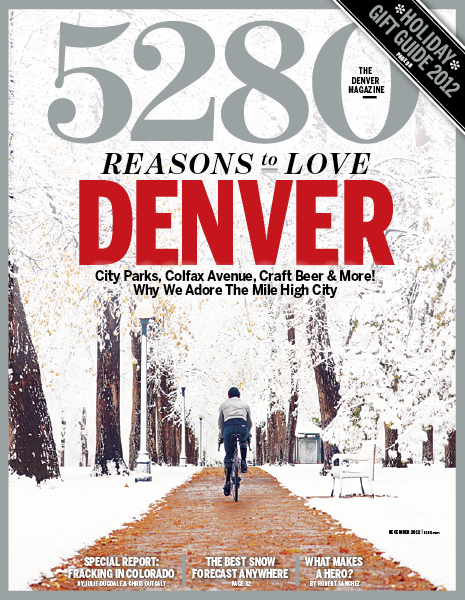The Local newsletter is your free, daily guide to life in Colorado. For locals, by locals.
When did you fall in love with weather?
Most meteorologists get bit by the weather bug before age 12. I first skied in Pennsylvania when I was four years old, and I fell in love with snow. By the time I was in elementary school I knew I liked two things: skiing and weather.
How do you predict winter storms?
The process of forecasting snow in big mountains relies as much on experience in the mountains as it does on knowledge of meteorology. When I moved to Colorado, it took me three or four years of skiing, traveling, and forecasting—getting a lot of forecasts wrong—before I figured out the microclimates. I obsessively look at forecast models and radar, but skiing is a priority, too. It’s really important to be on the ground. That’s what allows us to be more accurate than most weather services with a bunch of forecasters in an office building.
How far in advance can you forecast a powder day?
We can provide a detailed snow forecast five days out. In terms of planning powder days, use the seven- to 10-day forecast as a general idea of what might happen. At four and five days, start cancelling meetings or pretending you’re sick. Around two to three days in advance, that’s when we are really confident about the storms.
Last year’s ski season was rough. That means we’re due for a good season this year, right?
There is really no link from one season to the next. Long-range forecasts are absolutely terrible. People make predictions from La Niña or El Niño, which describe the temperature of water in the Pacific Ocean near the equator. We go back and look at what happened in different La Niña or El Niño seasons, and that’s basically how long-range forecasts are made.
5280.com Exclusive: More with Joel Gratz
What conditions make for a perfect powder day?
The dream powder day is my inspiration. For me, it has three elements: You want a very soft base—the ideal amount of snow is between 12 and 18 inches that fall after the lift closes; and you want very little wind with mountaintop temperatures between 10 and 15 degrees. This is what creates that bottomless, light snow. It makes a ski day, ski season, or even a ski career.
Can you tell when a storm will hit the metro area?
We have two distinct weather patterns for areas east of the Continental Divide and west of the Divide. Sometimes, when one side gets weather, the other won’t. When people see clouds moving in from the east or northeast, and we joke that it smells like Greeley, we are going to have an upslope storm where areas east of the mountains will get the most snow. When that happens, Eldora is the biggest beneficiary.
Besides weather forecasts, what else can people find on opensnow.com?
I write about the best powder days, road closures, finding the deepest snow, and other weather factors like wind and sun. Those are the things that can only be written about by another skier or snowboarder. That’s where other forecasts fail; they might provide weather information—snow depth and temperature—but they aren’t highly accurate when it comes to the nuances of our big mountains.
Where do you ski when a storm dumps snow all over the state?
My favorite place to ski is anywhere with great snow and great friends.
We heard you could predict which trail will get the most snow on any given mountain.
Everybody has their own likes and dislikes when it comes to terrain and type of snow. Skiing is a sport people fall in love with and are passionate about. They work their butts off to find interesting places to go with the best snow. You find that place on the mountain by skiing a lot, by chatting with folks, and by trial and error. I’m not out to give away the secret spots. I’m here to guide people in the right direction to the mountains that have a lot of snow, but individual ski runs have to be left for people to do a little bit of work.
______
RESUMÉ
NAME: Joel Gratz
AGE: 31
EXPERIENCE: Five years forecasting Colorado powder
FACTOID: Gratz decided to pursue weather full-time, in part, after getting a boastful phone call from a friend who was skiing waist-deep powder at Steamboat. Gratz had opted to ski another mountain, which ended up with considerably less snow.









